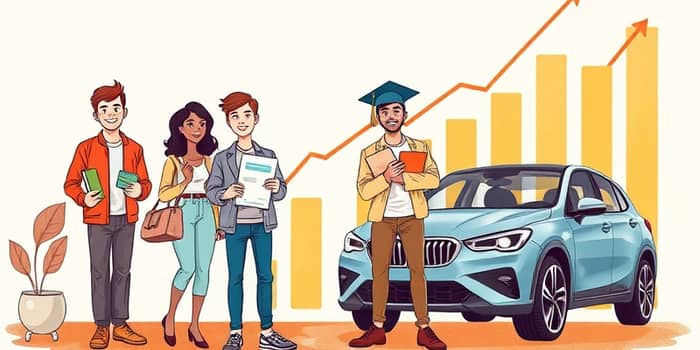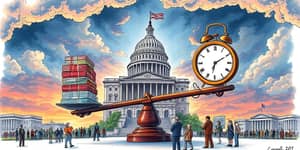
The surge in U.S. consumer borrowing and its close ties to changing confidence levels underscore a pivotal moment in personal finance trends. This article examines the data behind rising debt, explores the psychological link between optimism and spending, and offers practical insights for navigating an evolving economic landscape.
As of March 2025, total U.S. consumer debt reached $17.69 trillion, marking a 1.8 percent annual increase. Non-mortgage obligations accounted for roughly $4.60 trillion of this sum. Within the non-mortgage category, auto loans and leases represented the largest share at 36.2 percent, followed by student loans at 28.6 percent, credit card balances at 24 percent and other products at 11.2 percent. This breakdown underscores how diverse borrowing needs have evolved in recent years.
Meanwhile, credit card balances climbed to $1.04 trillion in March, a 4.1 percent rise year over year, even as average bankcard utilization eased slightly from 21.1 to 20.7 percent. Auto lending has grown more moderately, with outstanding loans and leases totaling $1.67 trillion, up 2 percent since last March. According to the Federal Reserve’s G.19 report, total outstanding consumer credit excluding mortgages was $5.01 trillion in the first quarter of 2025, reflecting a slight slowdown in growth compared with prior quarters.
In May 2025, the Conference Board’s Consumer Confidence Index surged to 98.0, up 12.3 points from April’s reading of 85.7. Improved expectations for business conditions and future income, alongside a temporary pause in U.S.-China tariffs, fueled this optimism. The Present Situation Index climbed to 72.8, though it remained below the 80-point threshold associated with recessionary fears.
However, confidence waned in June when the overall index slipped back to 93.0, erasing nearly half of May’s gains. The Present Situation Index dipped from 135.5 to 129.1, while the Expectations Index inched higher. These swings demonstrate how sentiment is highly sensitive to external shifts, reflecting the fact that confidence can pivot quickly in response to new developments.
Borrowing activity has closely mirrored these confidence trends. As optimism peaked in May, consumers felt more inclined to finance new purchases and carry higher balances. Yet, despite rising credit levels, household leverage and debt servicing remain low relative to historical norms, suggesting most Americans are managing their obligations responsibly.
Analysts note that the partial tariff pause may have accelerated the borrowing trend, reinforcing a belief in stable shopping costs and job prospects. Even as interest rates remain elevated, borrowers have taken advantage of gradual rate reductions, such as the drop in 60-month auto loan rates to 8.04 percent in Q1 2025.
Several factors underpin the current credit landscape. Federal Reserve interest rate policies, lingering inflationary pressures and fiscal measures such as tariff adjustments continue to shape consumer behavior. The University of Michigan’s Consumer Sentiment Index echoed similar cautious optimism in May, even as it remained vulnerable to new economic data.
Looking ahead, policymakers and lenders will watch credit growth closely for early signs of overextension. Rising delinquencies in subprime auto and credit card segments could foreshadow broader strain if economic conditions deteriorate or interest rates rise further.
Globally, patterns of consumer borrowing have transformed over decades. In the United Kingdom, data from the Financial Conduct Authority show that 75 percent of adults held some form of credit in 2017, compared with just 23 percent in 1969. This shift underscores a broader societal transition toward reliance on financing for everyday needs and reflects how credit has become woven into the fabric of modern economies.
For consumers, navigating this environment requires balancing opportunity with caution. While credit can unlock purchasing power, emerging delinquencies highlight the importance of prudent management. To maintain a healthy financial position, borrowers might consider the following strategies:
On the macro level, a sustained pause in major tariffs or further stabilization of interest rates could support consumer confidence and spur measured growth in borrowing. Nonetheless, both consumers and policymakers must remain alert to shifts in sentiment that could presage faster changes in spending patterns.
In conclusion, the recent climb in consumer credit usage, underpinned by a surge in confidence, paints a picture of cautious optimism. While the fluctuations between May and June highlight the fragility of sentiment, current debt levels and servicing rates suggest households are not yet overleveraged. As economic drivers evolve, ongoing vigilance and disciplined financial practices will be key to ensuring that credit remains a tool for empowerment rather than distress.
References













